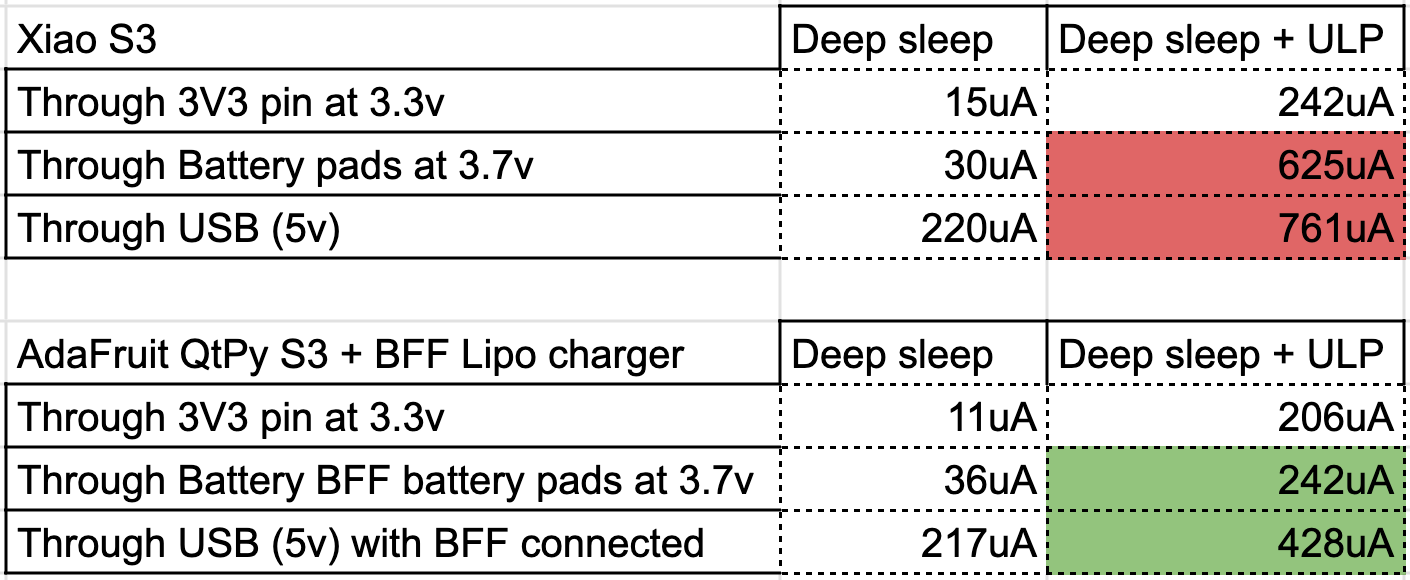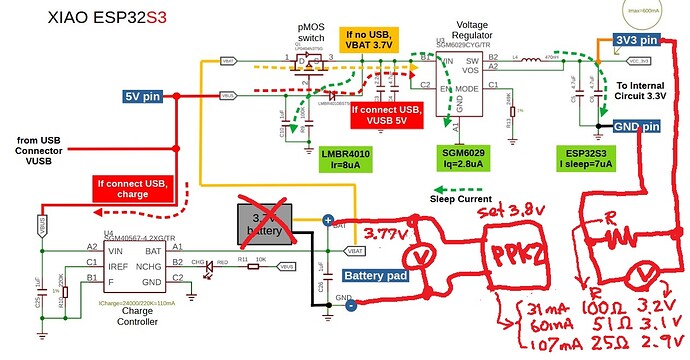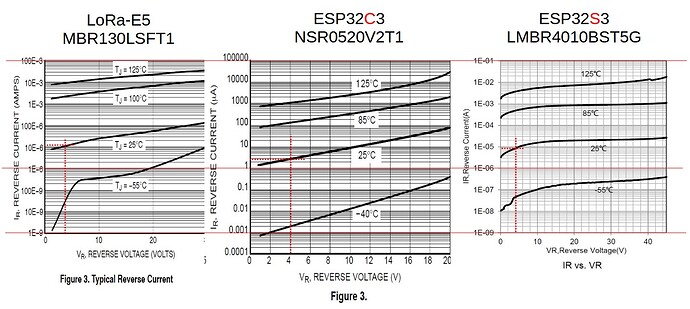The Xiao S3 comes with a sgm6029 buck converter whose datasheet promises a 90% conversion efficiency.
However, that doesn’t seem to be the case, at least with my particular board when the power consumption isn’t very low:
I measured the power consumption with the a Nordic PPK2:
-
on the battery pins when supplying 3.7V .
-
when injecting 3.3V directly to the Xiao’s 3V3 pin, which will give us the board’s load (it skips the regulator and will let us infer how much the regulator is consuming).
-
And for extra reference, I also measured the power consumption through USB (which will have the overhead of the battery charger).
In deep sleep I get 30uA, which seems reasonable although it contrasts with the 11uA mentioned by msfujino at Comparison of Sleep Currents for XIAO ESP32C6, S3, and C3 and the 15uA I measured when I skipped the regulator.
But, when using the ULP during deep sleep (gathering ADC measurements) I get a whopping 625uA which isn’t reasonable (I get 242uA when skipping the regulator).
I get a similar behavior when measuring power through USB (although I get higher measurements due to the charger being on).
For comparison, I made the same measurements on an Adafruit QT Py S3 with a BFF Lipo charger attached. The Qt Py uses an a completely different LDO and charger but it helps to provide a ballpark comparison.
The QT Py has a behavior much closer to what I would had expected on the Xiao. However, I would love to use the Xiao since it’s cheaper and doesn’t require an external board for battery charging.
Any ideas of what could be wrong? I really hope I am doing something wrong or that my S3 board is faulty because I ordered a bunch of C6s which use the same regulator.











